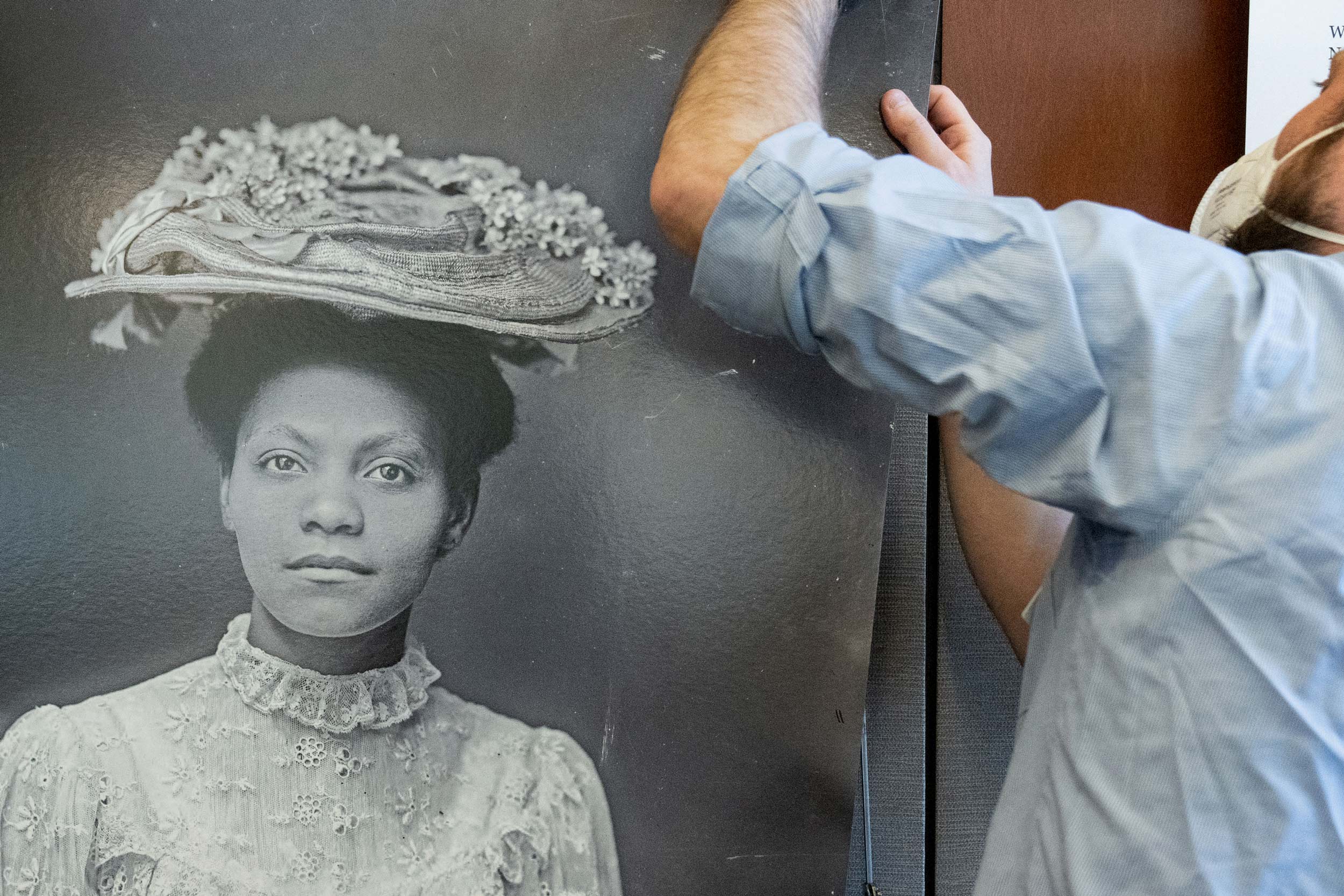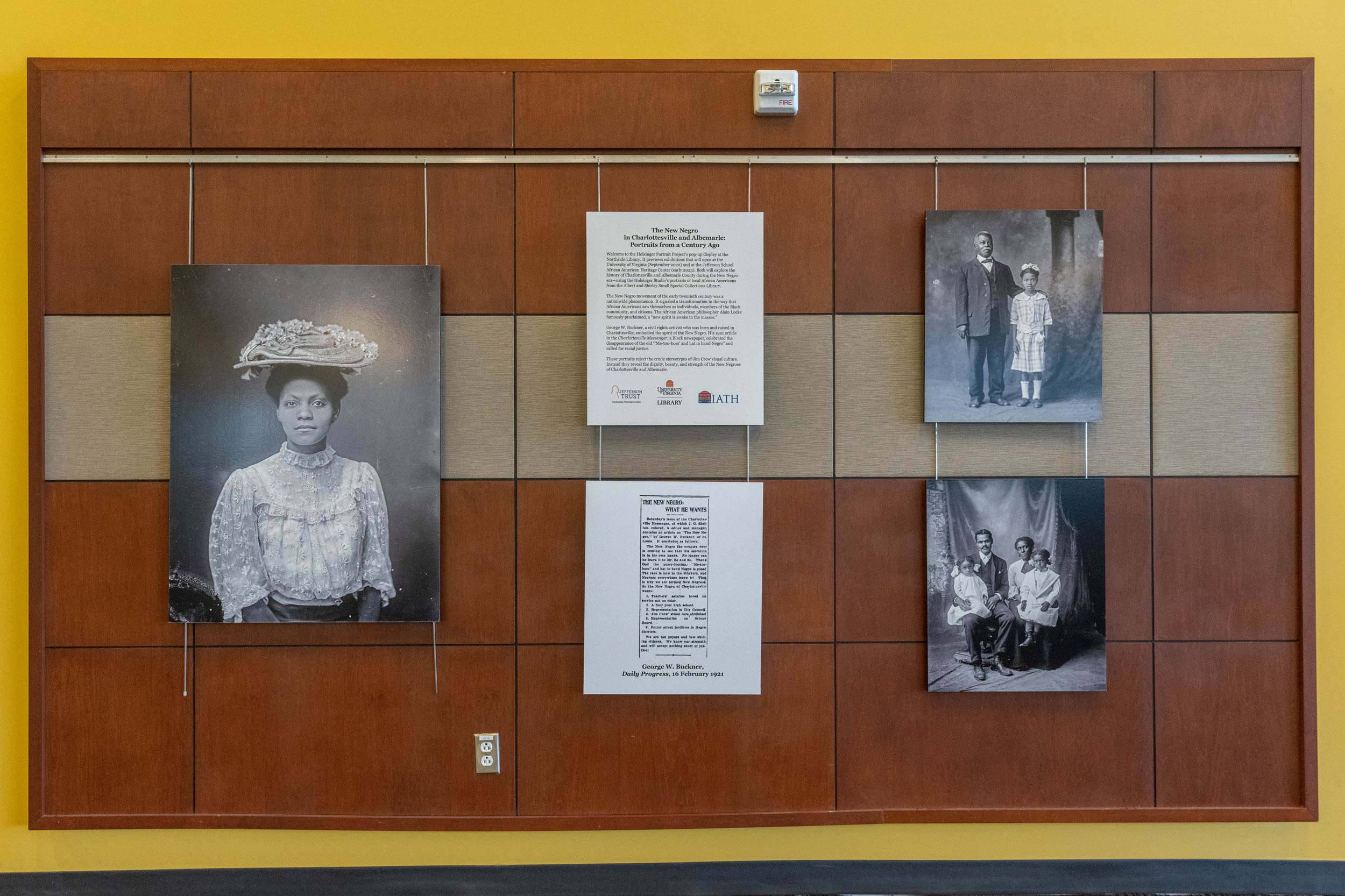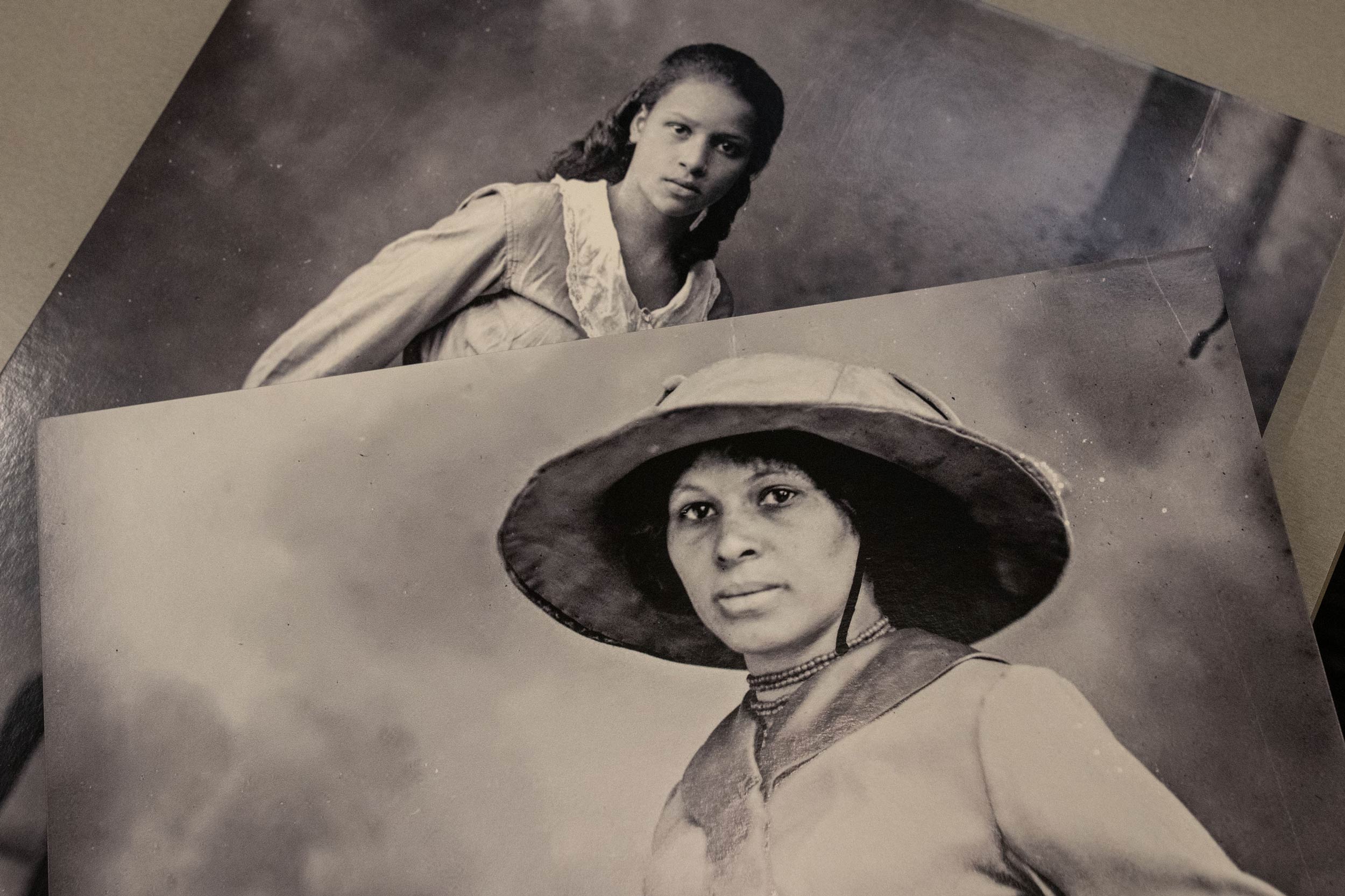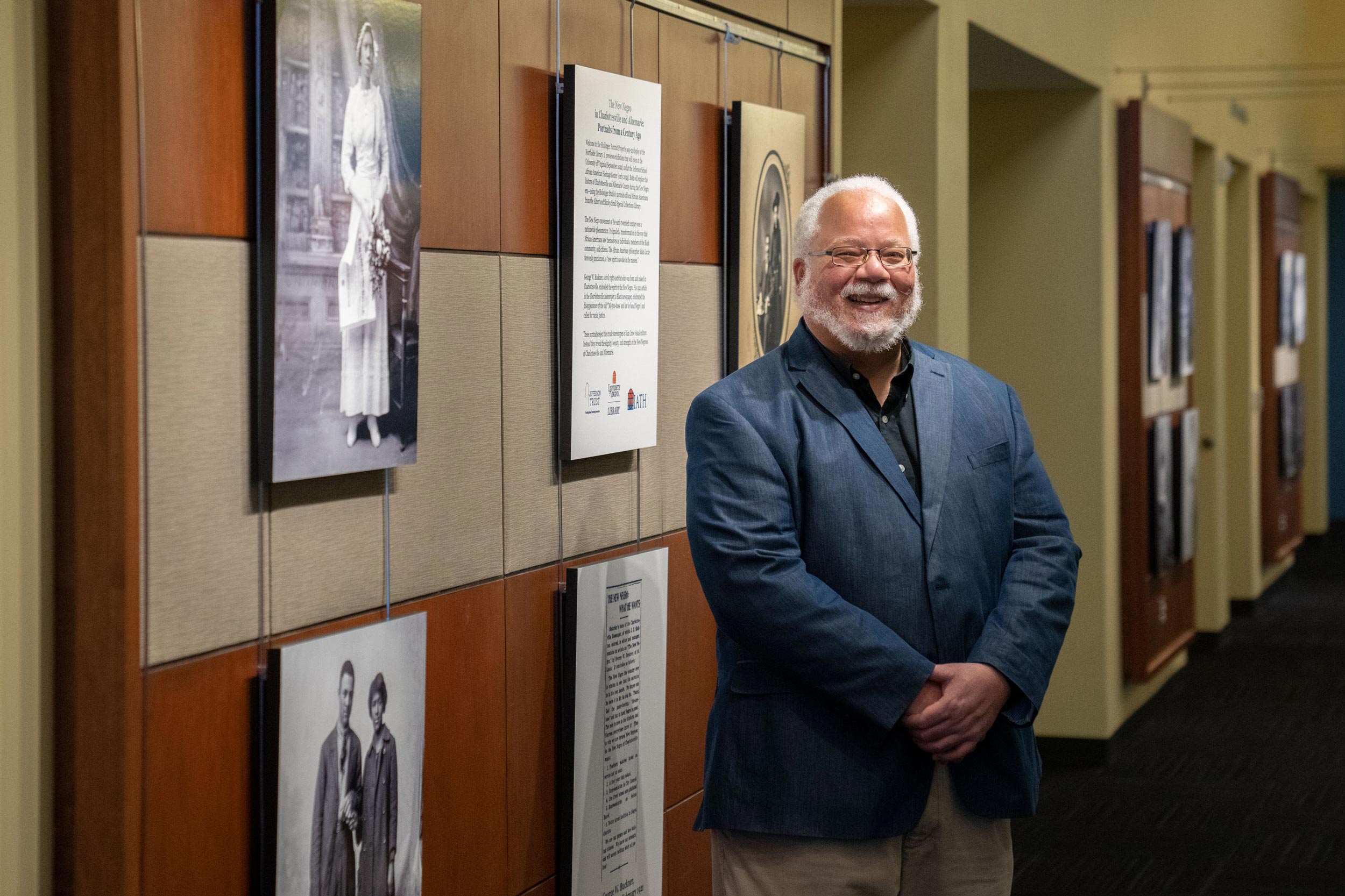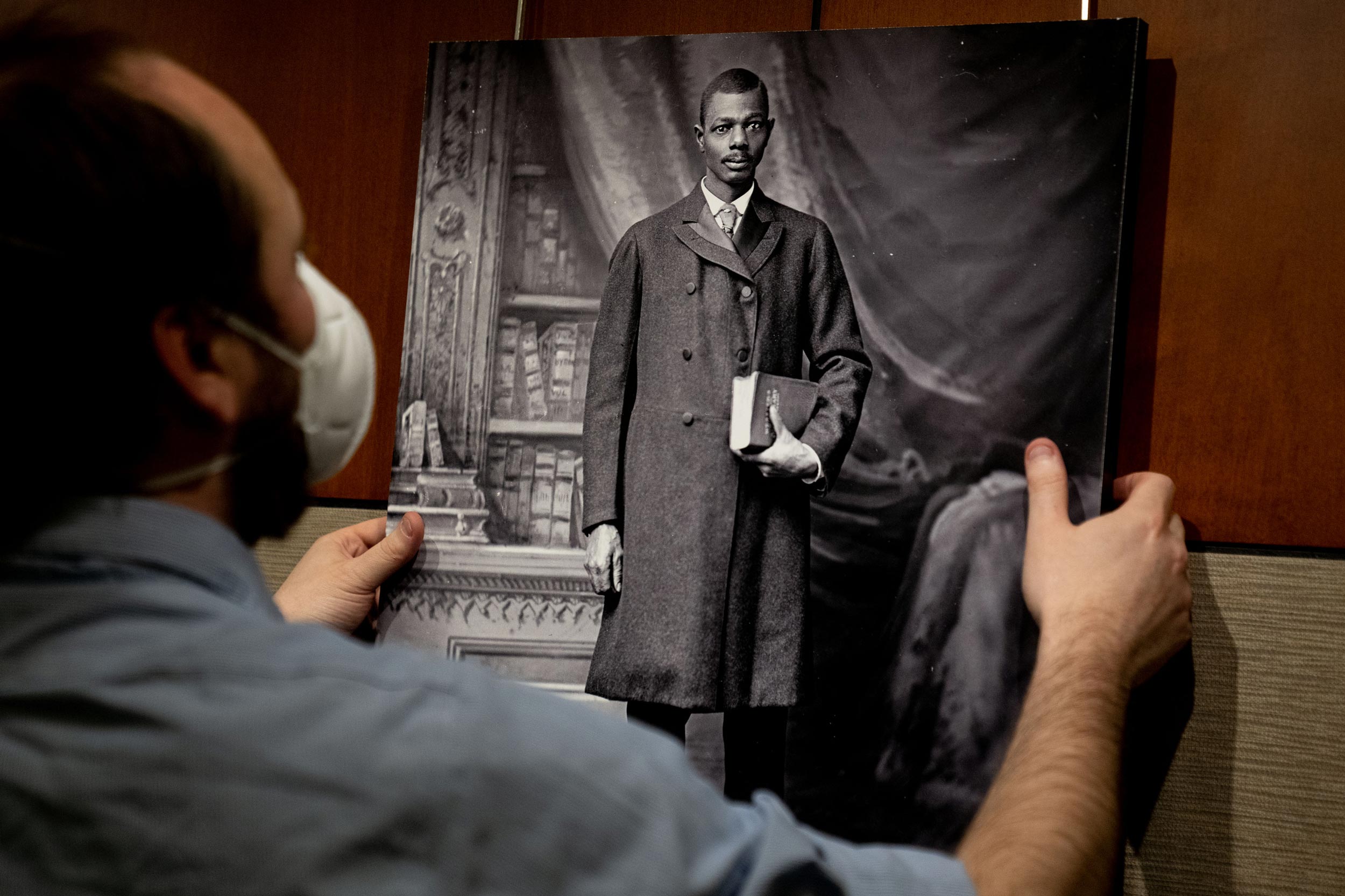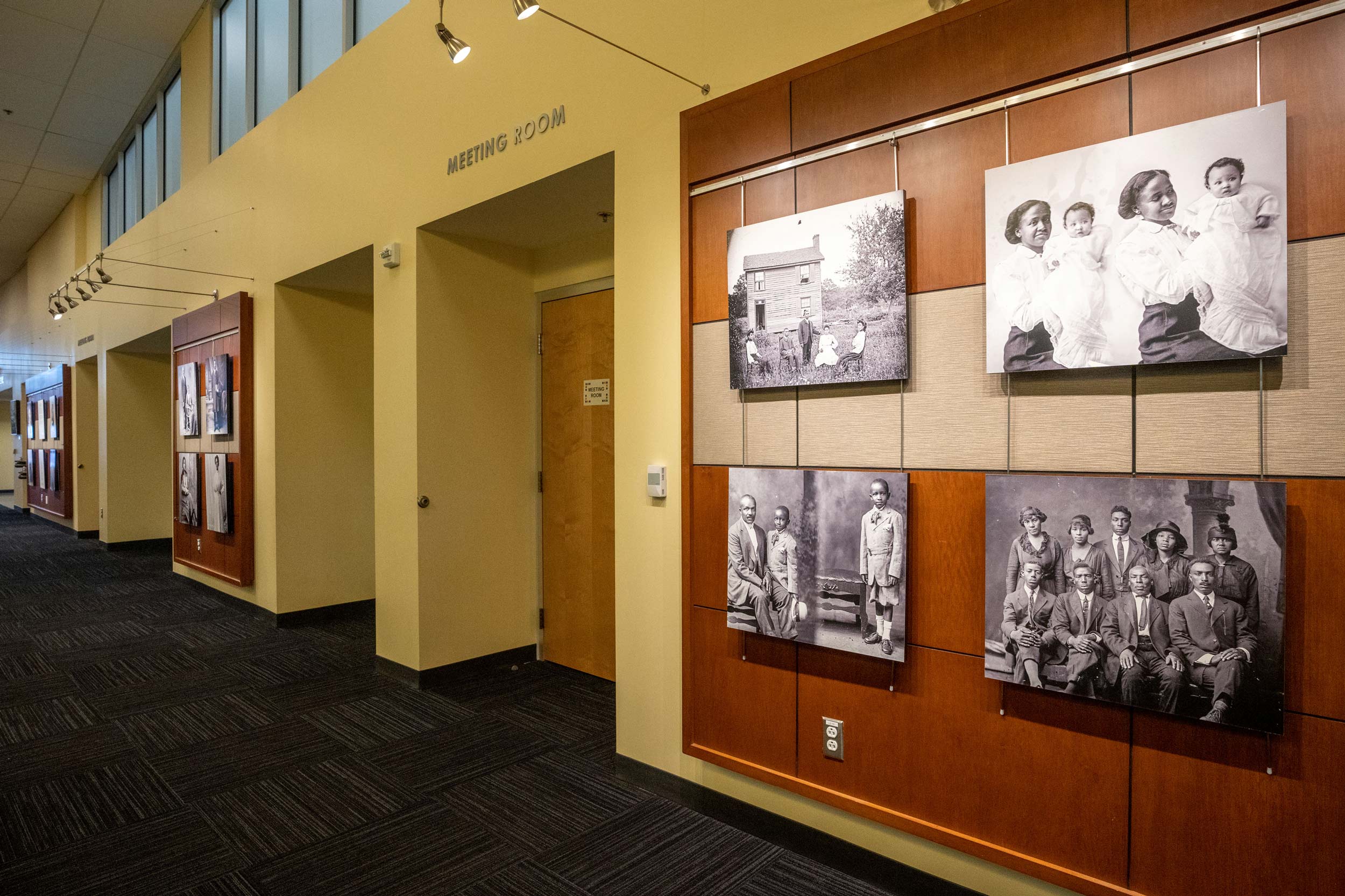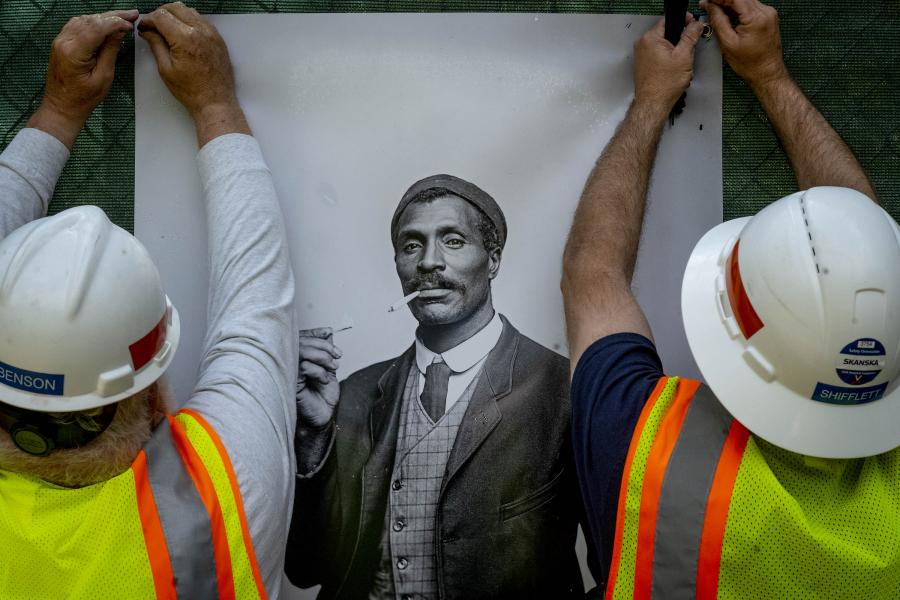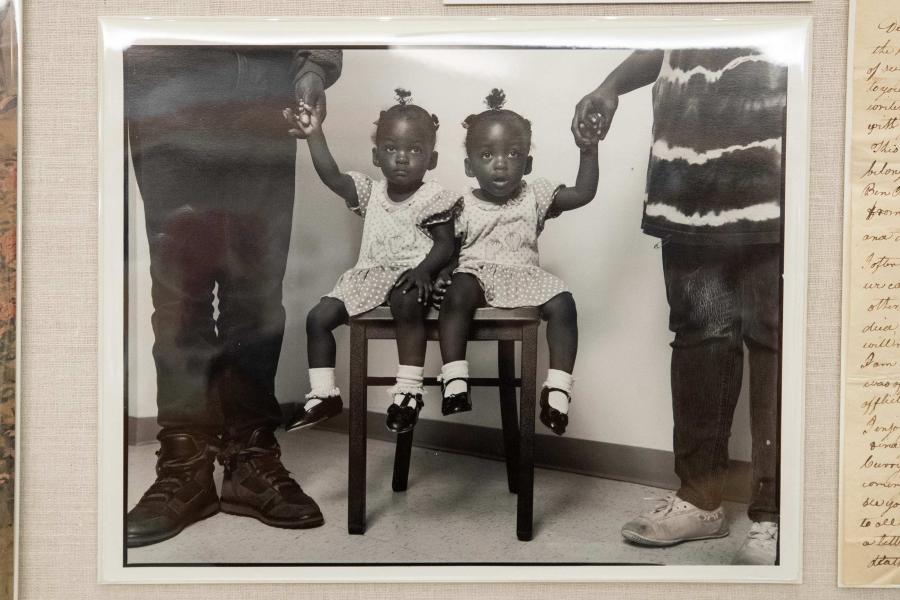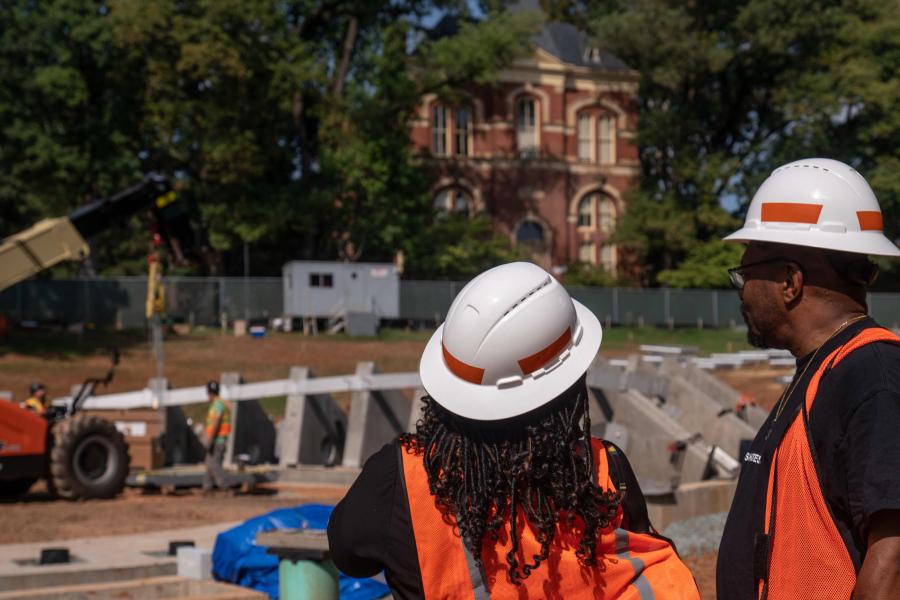Wearing a stiff hat adorned with small flowers and a fine, lacey blouse, the lone woman gazes directly into the lens – and hence at the viewer, her expression as enigmatic as the Mona Lisa’s.
Her identity is currently a mystery, one of the many unknowns surrounding the subjects of about 500 portraits of local African Americans who commissioned the Holsinger Studio, owned by professional Charlottesville photographer Rufus W. Holsinger, to take their pictures in the early 20th century.
University of Virginia associate history professor John Edwin Mason and others, including scholars, students and community members, are on a mission to share these images and perhaps solve some of those mysteries via the Holsinger Portrait Project. A partnership between UVA and the Jefferson School African American Heritage Center, the collaborative project is based on the Holsinger Studio Collection, held in the University’s Albert and Shirley Small Special Collections Library.
A new pop-up exhibition that displays a selection of the portraits through the month of March is set up to entice the public at the Northside branch of the Jefferson-Madison Regional Library.
Mason considers the exhibit a teaser – with just enough information to give context for those viewers who haven’t seen the images or known about the Holsinger Studio Collection.
